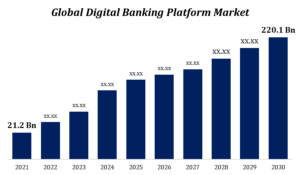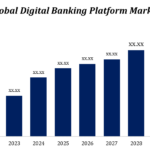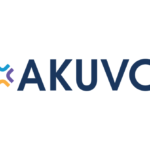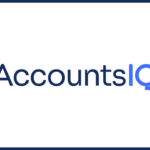Blockchain and Distributed Ledger Technology
In recent years, blockchain and distributed ledger technology (DLT) have emerged as transformative innovations with the potential to revolutionize various industries, including finance, supply chain management, and beyond. These technologies are celebrated for their ability to enhance transparency, security, and efficiency. In this blog, we will explore the core concepts of blockchain and distributed ledger technology, their key features, applications, and the impact they are having on different sectors.
Understanding Blockchain Technology
Blockchain is a specific type of distributed ledger technology that structures data into blocks, which are then linked together in a chronological chain. Each block contains a list of transactions or data entries, along with a cryptographic hash of the previous block, creating a secure and immutable record of information.
Key Features of Blockchain
- Decentralization: Unlike traditional databases controlled by a central authority, blockchain operates on a decentralized network of nodes (computers). Each node maintains a copy of the blockchain, ensuring that no single entity has control over the entire ledger.
- Immutability: Once data is recorded in a block and added to the blockchain, it is nearly impossible to alter or delete. This immutability is achieved through cryptographic hashing and consensus mechanisms.
- Transparency: Blockchain transactions are visible to all participants in the network, enhancing transparency and trust. Each participant can verify transactions independently.
- Consensus Mechanisms: Blockchain networks use consensus algorithms, such as Proof of Work (PoW) or Proof of Stake (PoS), to validate and agree on the state of the blockchain. These mechanisms ensure that all nodes in the network agree on the validity of transactions.
Understanding Distributed Ledger Technology (DLT)
Distributed Ledger Technology (DLT) is a broader category that includes blockchain as one of its implementations. DLT refers to a decentralized database that is distributed across multiple nodes, with each node maintaining a copy of the ledger. Unlike traditional ledgers, DLT does not rely on a central authority and can use various consensus mechanisms to ensure data integrity and consistency.
Key Features of DLT
- Decentralization: Similar to blockchain, DLT operates on a distributed network of nodes, eliminating the need for a central authority.
- Data Integrity: DLT ensures data integrity through cryptographic techniques and consensus algorithms, making it difficult for any single entity to tamper with the data.
- Interoperability: DLT can support interoperability between different networks and ledgers, enabling seamless data sharing and transactions across various platforms.
- Flexibility: DLT encompasses various designs and structures beyond the traditional blockchain model, including Directed Acyclic Graphs (DAGs) and other innovative architectures.
Applications of Blockchain and DLT
1. Financial Services
Blockchain: In the financial sector, blockchain is transforming payment systems, trading, and settlement processes. It enables faster, more secure transactions with reduced reliance on intermediaries.
Applications:
- Cryptocurrencies: Digital currencies like Bitcoin and Ethereum operate on blockchain technology, providing decentralized alternatives to traditional currencies.
- Smart Contracts: Self-executing contracts with predefined rules and conditions, executed automatically when conditions are met.
2. Supply Chain Management
DLT: Distributed ledger technology enhances transparency and traceability in supply chains by providing a single, immutable record of transactions and goods.
Applications:
- Product Tracking: DLT allows for real-time tracking of goods from production to delivery, improving accountability and reducing fraud.
- Supplier Verification: Ensures the authenticity and quality of products by providing a transparent record of the supply chain.
3. Healthcare
Blockchain: In healthcare, blockchain can improve data security, patient privacy, and interoperability.
Applications:
- Medical Records: Securely storing and sharing patient records while maintaining privacy and control over access.
- Drug Traceability: Tracking the production and distribution of pharmaceuticals to prevent counterfeiting and ensure quality.
4. Real Estate
Blockchain: Blockchain simplifies property transactions by automating processes and reducing the need for intermediaries.
Applications:
- Property Registries: Providing a transparent and tamper-proof record of property ownership and transactions.
- Smart Contracts: Automating property transfer processes and reducing paperwork and administrative overhead.
5. Identity Management
DLT: Distributed ledger technology can enhance digital identity management by providing secure and verifiable identity credentials.
Applications:
- Digital IDs: Creating tamper-proof digital identities that can be used for various services, including voting and access control.
- KYC Compliance: Streamlining Know Your Customer (KYC) processes by securely sharing verified identity information.
Challenges and Considerations
1. Scalability
Both blockchain and DLT face challenges related to scalability. As the number of transactions increases, maintaining performance and speed can become difficult. Solutions such as sharding and layer-2 scaling are being explored to address these issues.
2. Energy Consumption
Certain consensus mechanisms, such as Proof of Work, are energy-intensive and raise environmental concerns. The industry is moving towards more energy-efficient alternatives like Proof of Stake.
3. Regulation and Compliance
The regulatory landscape for blockchain and DLT is evolving. Ensuring compliance with legal and regulatory requirements is crucial for widespread adoption and integration.
4. Interoperability
As different DLT systems and blockchain networks emerge, achieving interoperability between them remains a challenge. Efforts are underway to create standards and frameworks that facilitate cross-network communication.
The Future of Blockchain and DLT
The future of blockchain and distributed ledger technology is bright, with ongoing innovation and expansion across various sectors. Key trends and developments include:
- Integration with Emerging Technologies: Combining blockchain with technologies like artificial intelligence (AI) and the Internet of Things (IoT) to create new applications and solutions.
- Regulatory Evolution: Developing clear regulatory frameworks that support innovation while ensuring security and compliance.
- Increased Adoption: Expanding the use of blockchain and DLT in sectors such as finance, supply chain, and healthcare, driving further adoption and integration.


































